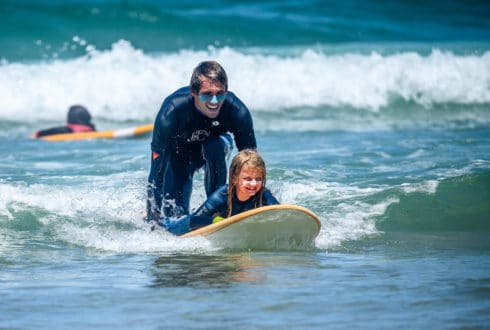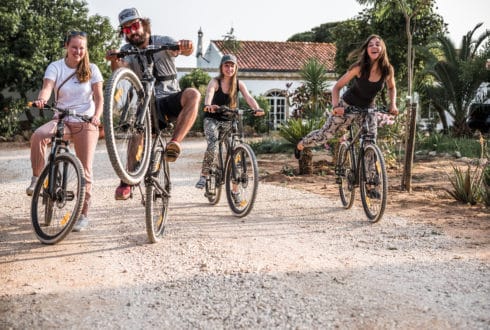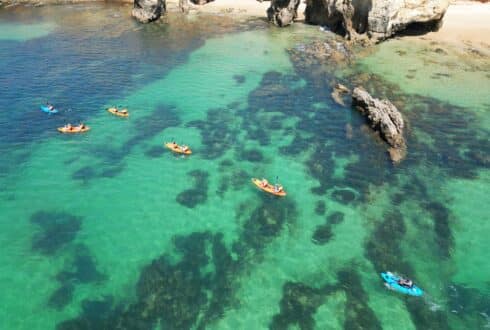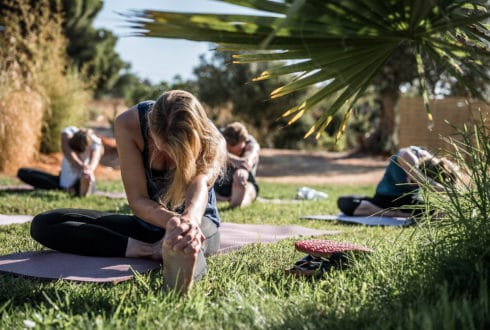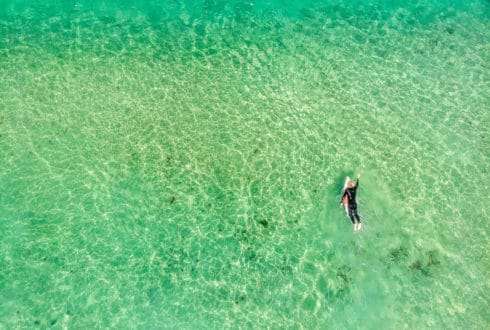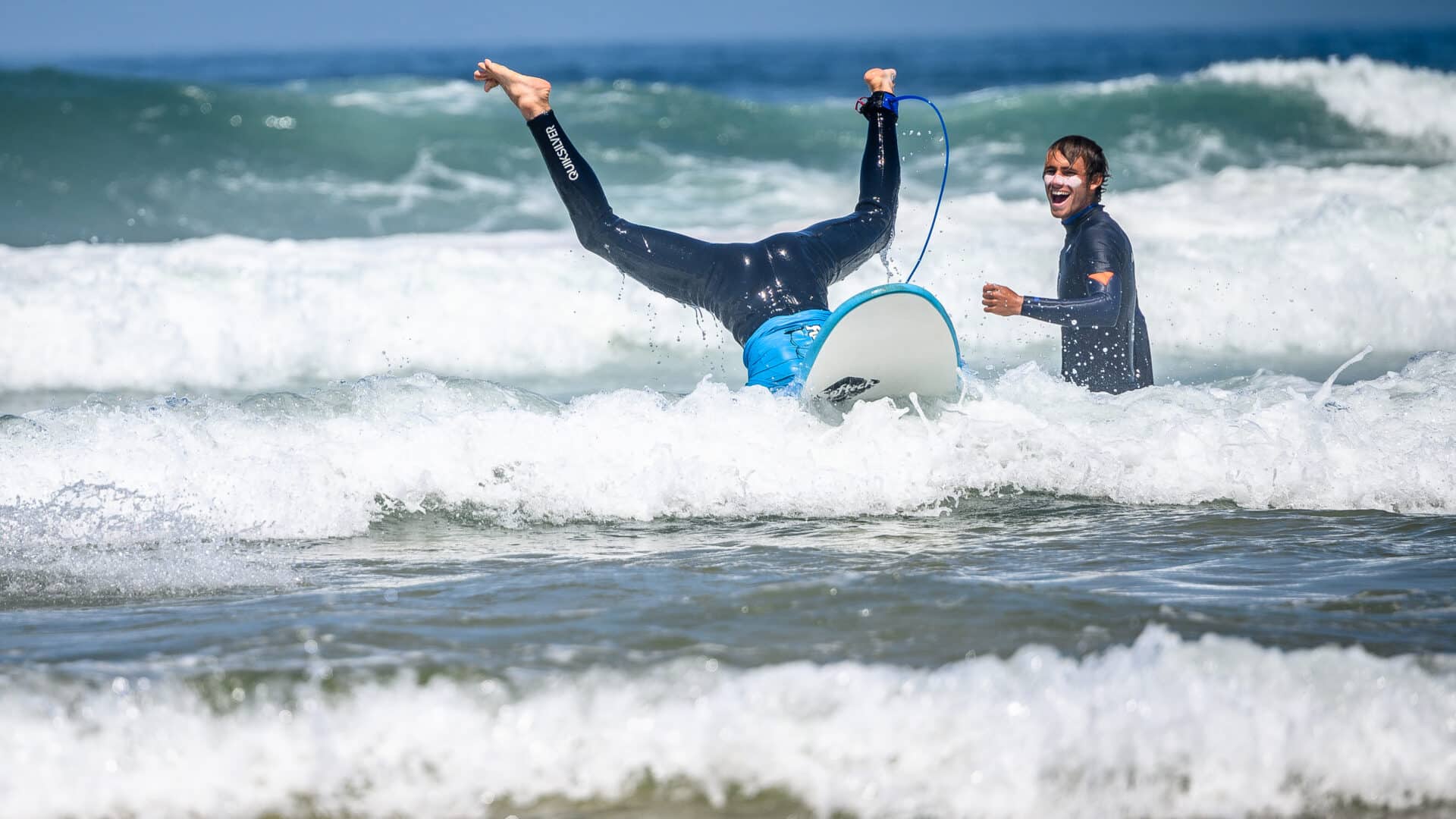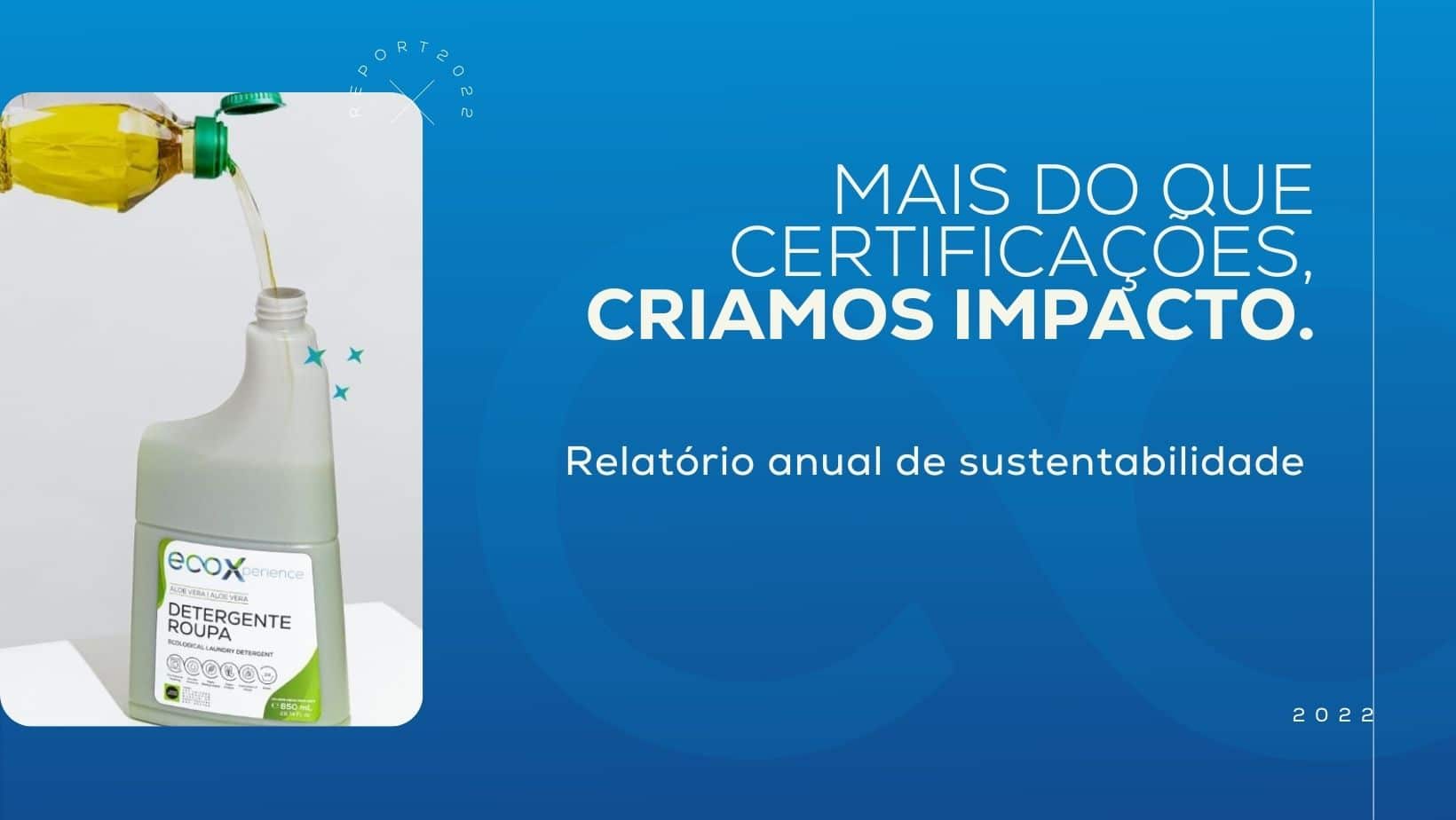Kids
Vitamin Sea, that´s all they need !!
Let the sea set them free !!Experiences
Collect moments not things, have stories to tell not stuff to show!!
Sea you soon, right now !!Rentals
You can´t buy hapinness but you can rent a surfboard !!
The ocean is where I belong, I´m in !!Yoga
“It´s all about where your mind´s at” - K. Slater 11 times world surf champion
Today I work in instead of workout.Ready for us?
Yes, yes yesKayak Tours
The best kayak tour around
Book now :)Surf Lessons
“ The best surfer out there is the one having the most fun” - Phil Edwards
Salty but sweet, I´m ready !!Kids
Vitamin Sea, that´s all they need !!
Let the sea set them free !!Experiences
Collect moments not things, have stories to tell not stuff to show!!
Sea you soon, right now !!Rentals
You can´t buy hapinness but you can rent a surfboard !!
The ocean is where I belong, I´m in !!Yoga
“It´s all about where your mind´s at” - K. Slater 11 times world surf champion
Today I work in instead of workout.Ready for us?
Yes, yes yesKayak Tours
The best kayak tour around
Book now :)Much more than just another surf school
At Future Eco Surf School we aim not only to teach you how to surf, but we also want to share with you our stoke and connection with nature and especially with the ocean. This can be a life-changing and inspiring process if done in a conscious and committed way.
Get to know a typical day with Future Eco Surf School
Sustainability
At Future Eco Surf School we believe we can make a difference.
That together we can do more and better to help create a healthier planet and a fairer society.
Being conscious that with small steps we accomplish a long walk, we are at this stage restructuring our internal and operational procedures and strategies. It will allow us to enjoy nature to the fullest with minimum impact.
Blog
Read the latest on our blog
Let’s be honest! We all need to start at some point and we all make mistakes during learning something new. In this article we gather 5 mistakes that beginners usually do in their first day of surfing apart of putting their wetsuits the other way around.
1. Putting the wrong foot first.
Before we start surfing we have to figure out which is our dominant foot what stands in the front. ( we wrote another article about this in here ) So what suppose to happen when we do a pop up is that we put our back foot first to right front of the fins. This is a short set up step and following this we put our front foot to the center of the board , driving in between the hands to under the chest. This is our long step and the step which drops the weight on your board so you can glide ahead on the wave.
Beginners tend to step with the front foot first and get stuck with their backfoot all the way in the end of the board so they have way too much space in between the legs or possibly not even able to stand up from such a wide position.
At the end we are only human ,we make mistakes but we only have two legs we have a relative 50-50 chance to mix up the order. Imagine if an octopus would try to surf. We can be considered lucky species.
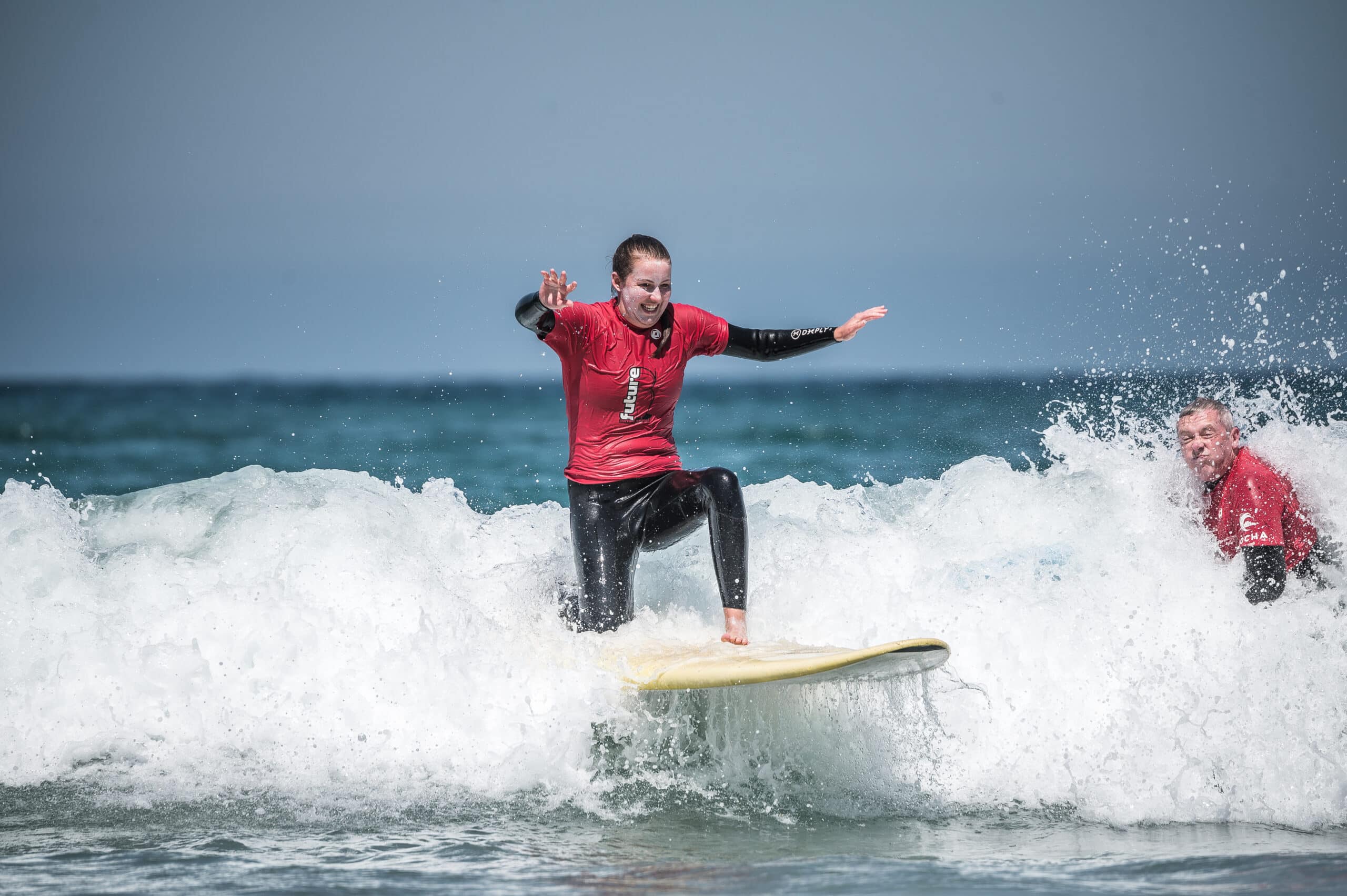
2. Putting the knee down
As the wave starts pushing the board ahead we suppose to come up to the well known of yoga position “cobra” then start putting our back FOOT to the board. Here people can get shocked by the energy, the adrenalin ,the fear and all things happening at the same time so in a so-called panic reaction they push down the back of the board with their knees. In practice what happens : The tail starts to sink, the nose points up and we stall like in traffic our freshly licensed driver who drives with the handbrake on.
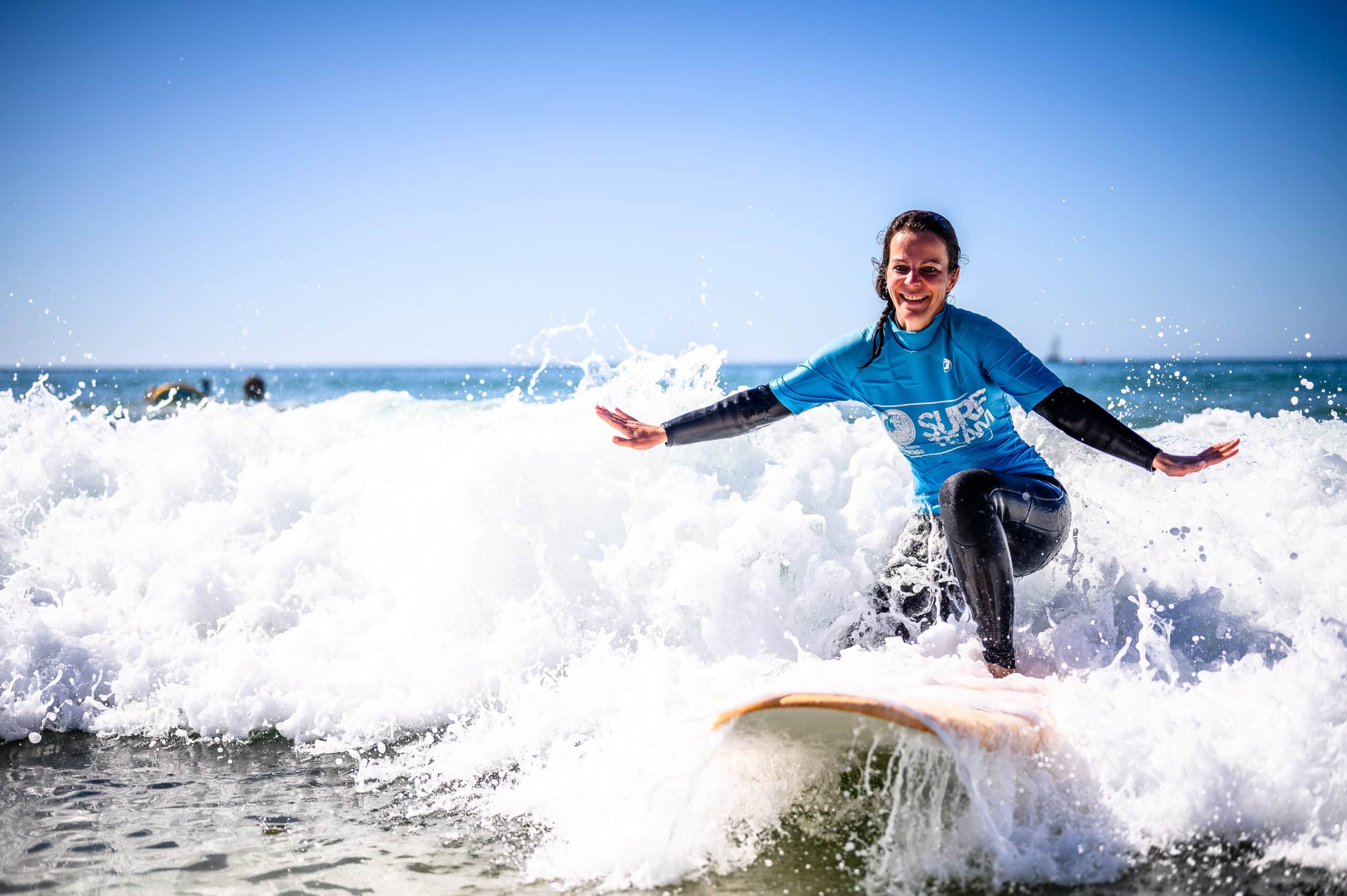
3. Looking down
Human body is the best designed machine ever but many of us forgot to read the user’s manual. As a matter of fact “You go where you look” So when we look down to our board while surfing , our eyes give the instruction to the brain to go DOWN. Next thing happens, you find yourself under water. Keep looking at the beach! On your first day your goal is to up and ride for a few seconds towards the beach.
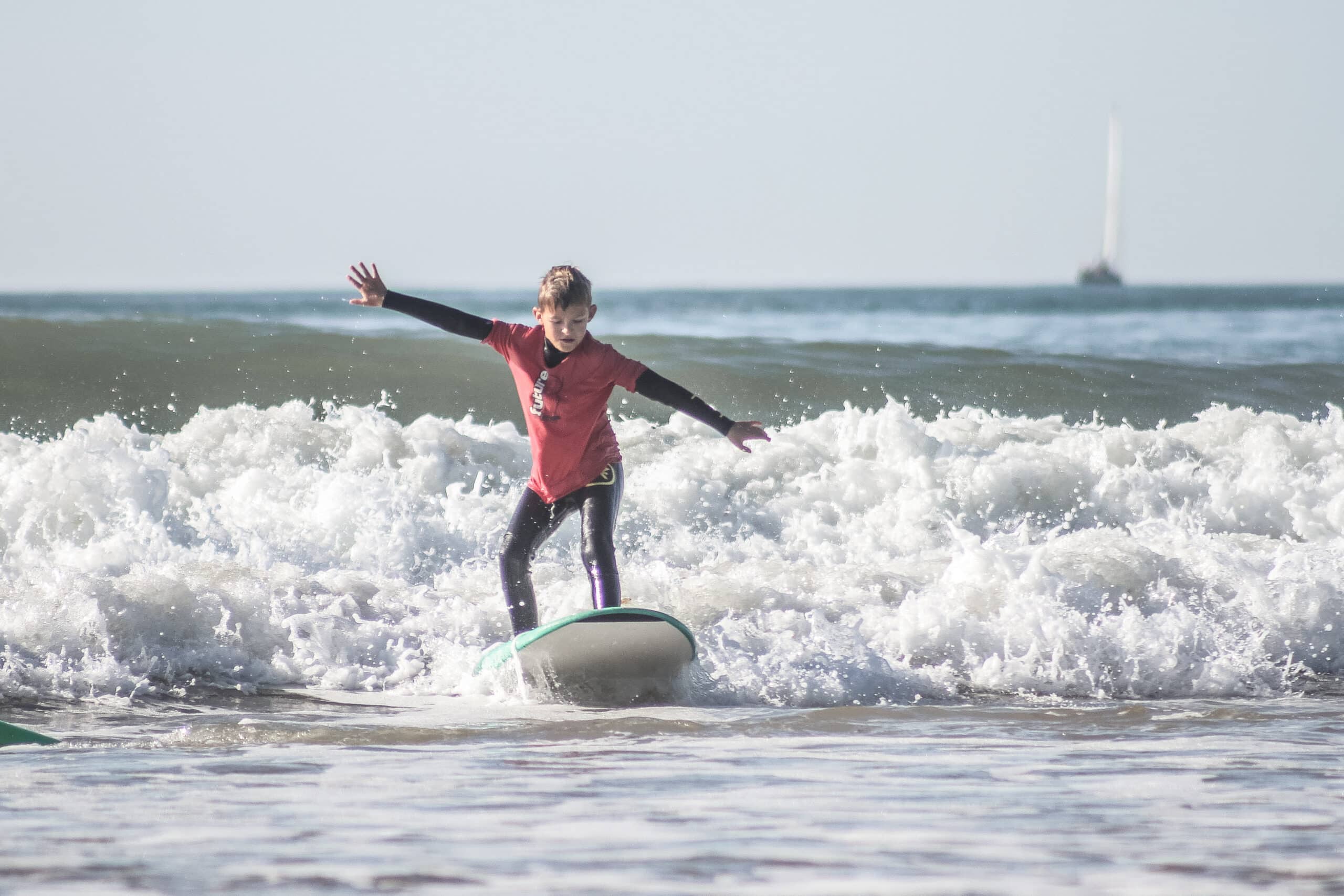
4. Popping up too early/too late
It might sound a bit hippy but when we surf we must connect with the wave and become the wave. What this means in physics is that we have to gain a certain amount of kinetic energy very quickly so the wave can pick us up and push us ahead. If we start doing our pop up too early we miss the wave. If we already missed the wave it does not make sense to pop up because then we basically just stand up on flat water which is called Stand Up Paddling or SUP.

5. Not finding the balance or the right position
Most surf schools are teaching on the biggest boards possible to maximize the buoyant force and make you as stable as possible. Although just think about a rowing boat or kayak once you start moving even those objects can start shaking. Once you already unstable and shaking it’s very hard to keep in direction your board or catch a wave. Those who start surfing on a smaller day or can test themselves in flat water before they go between waves are the lucky ones. This way they can get familiar with their positioning and balance so once the wave comes they are ready to paddle ahead and catch.
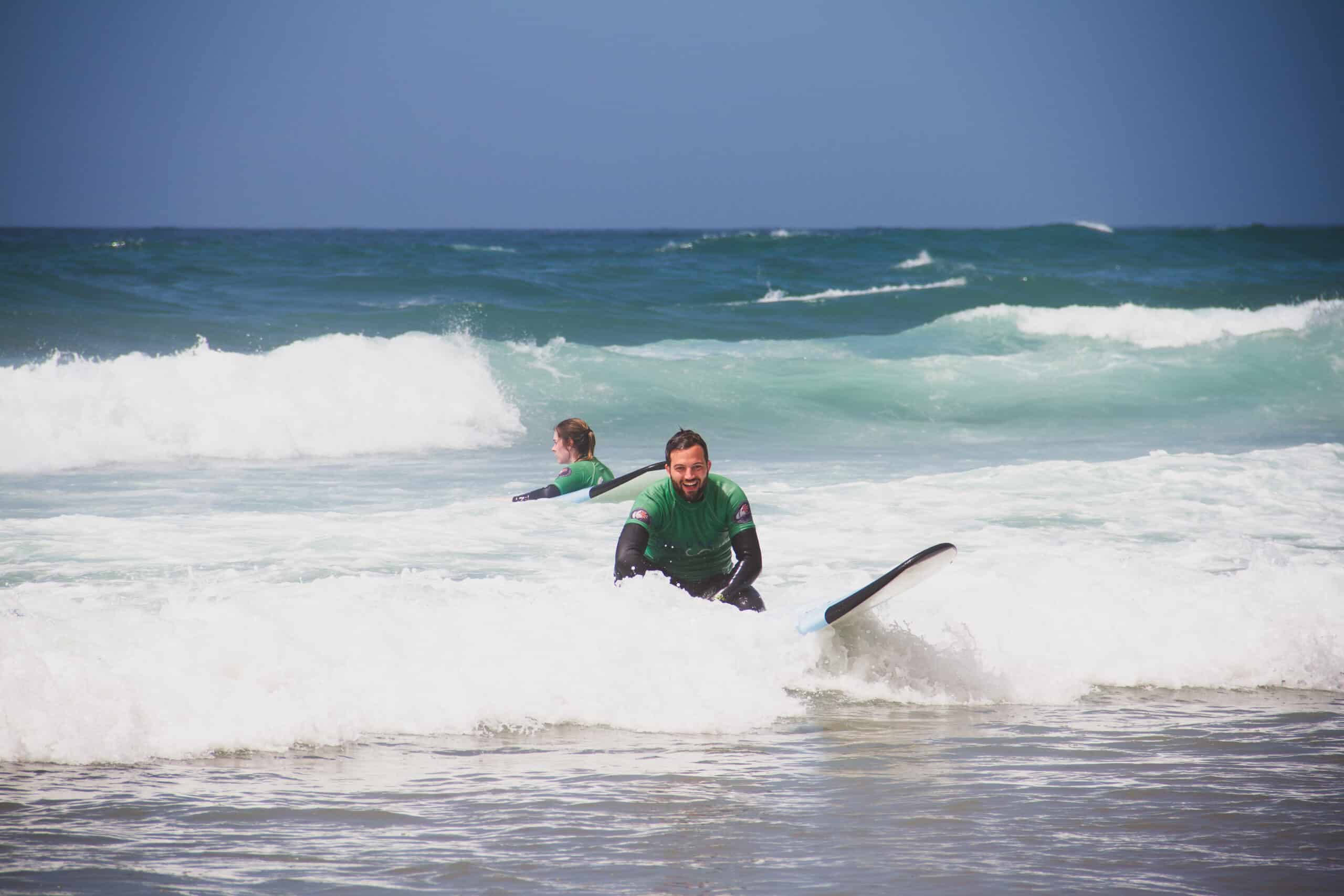
These are the mistakes that you will probably commit on your first day of surfing. As it is a brand new sport for you, there is no shame of being a bit goofy in the beginning but you know what? Prove us wrong ! Come and show how a first timer can shred the waves too!
” [“post_title”]=> string(57) “5 mistakes that you will commit on your first surf lesson” [“post_excerpt”]=> string(0) “” [“post_status”]=> string(7) “publish” [“comment_status”]=> string(6) “closed” [“ping_status”]=> string(6) “closed” [“post_password”]=> string(0) “” [“post_name”]=> string(57) “5-mistakes-that-you-will-commit-on-your-first-surf-lesson” [“to_ping”]=> string(0) “” [“pinged”]=> string(0) “” [“post_modified”]=> string(19) “2024-04-08 14:15:40” [“post_modified_gmt”]=> string(19) “2024-04-08 14:15:40” [“post_content_filtered”]=> string(0) “” [“post_parent”]=> int(0) [“guid”]=> string(35) “https://future-ecosurf.com/?p=16859” [“menu_order”]=> int(0) [“post_type”]=> string(4) “post” [“post_mime_type”]=> string(0) “” [“comment_count”]=> string(1) “0” [“filter”]=> string(3) “raw” } [1]=> array(24) { [“ID”]=> int(16802) [“post_author”]=> string(1) “8” [“post_date”]=> string(19) “2024-06-20 10:12:00” [“post_date_gmt”]=> string(19) “2024-06-20 10:12:00” [“post_content”]=> string(5322) “In an era where environmental consciousness is paramount, ECOX stands out as a company dedicated to providing eco-friendly solutions for everyday needs. One of their flagship products, the ECOX Detergent, has gained significant attention for its innovative approach to cleaning while minimizing environmental impact.
Introduction to ECOX
A company that has made sustainability the core of its mission. Established in 2010, the company has consistently strived to develop products that align with eco-friendly practices. Their commitment to the environment is evident in every aspect of their operations, from sourcing raw materials to packaging and distribution.
Their Detergent
It is a testament to the company’s dedication to sustainable living. Unlike traditional detergents that often contain harmful chemicals and contribute to pollution, ECOX Detergent is formulated with biodegradable ingredients that break down naturally without harming the environment. This not only ensures a safe and gentle cleaning experience but also reduces the overall carbon footprint associated with the product.
One of the standout features of ECOX Detergent is its innovative packaging. The company has adopted a minimalist approach, using recycled and recyclable materials for their containers. This not only reduces plastic waste but also encourages consumers to participate in recycling initiatives. Additionally, the packaging is designed to be lightweight, further reducing the environmental impact associated with transportation.
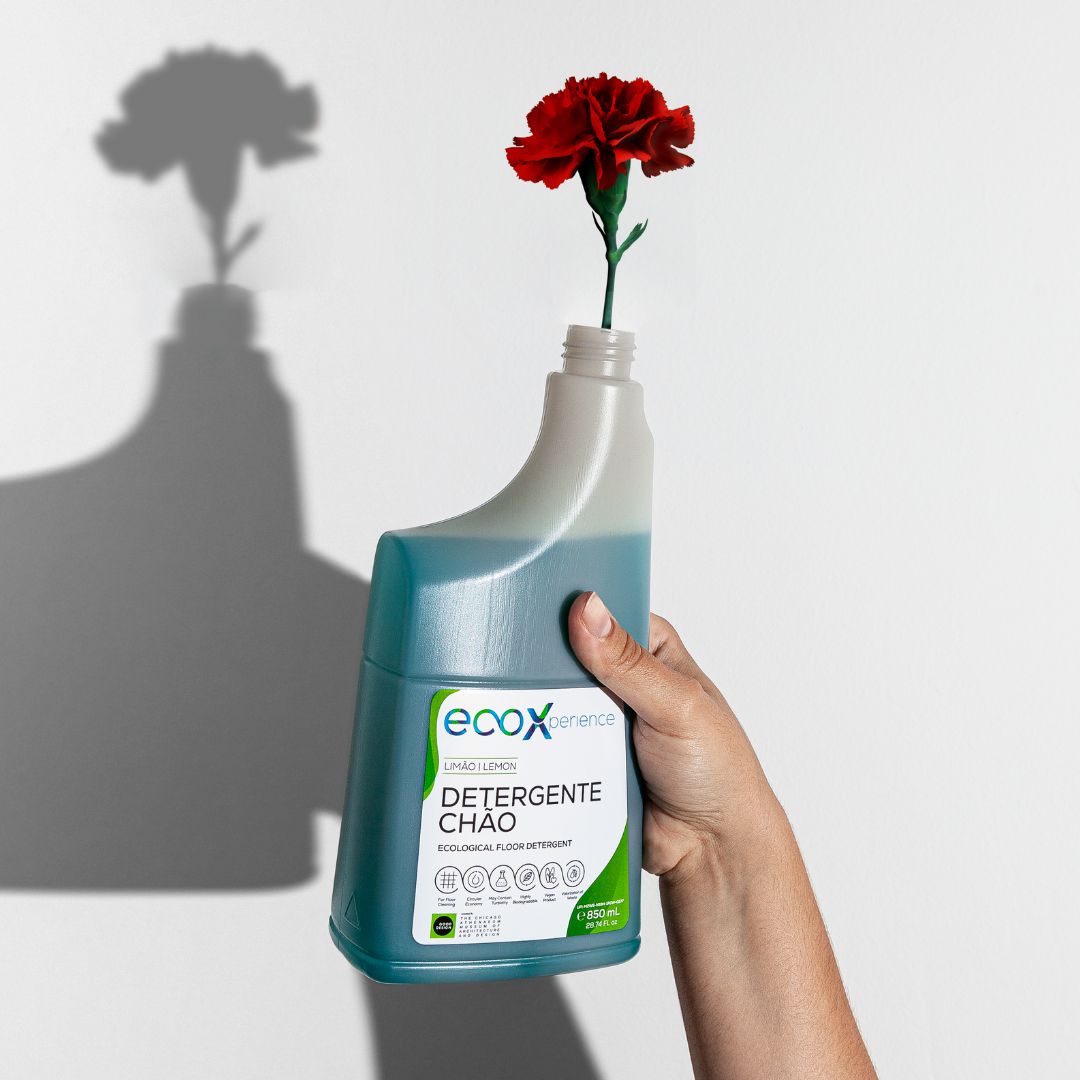
Beyond its eco-friendly composition and packaging
ECOX Detergent does not compromise on cleaning effectiveness. The product is specifically formulated to tackle tough stains and dirt while being gentle on fabrics and surfaces. This balance between efficiency and environmental consciousness has garnered praise from consumers who seek effective cleaning solutions without compromising their commitment to sustainability.
ECOX’s approach to business
Extends beyond their product line. The company actively engages in environmental initiatives, supporting causes such as reforestation projects and beach cleanups. This holistic approach to corporate responsibility aligns with the values of environmentally conscious consumers who are increasingly seeking products from companies that prioritize both efficacy and sustainability.
In conclusion
ECOX and its detergent product represent a positive shift towards sustainable living. By combining effective cleaning solutions with eco-friendly practices, ECOX is setting a precedent for companies in the cleaning industry. As consumers become more aware of their environmental impact, ECOX stands as a beacon of innovation, providing a cleaner and greener future for all.
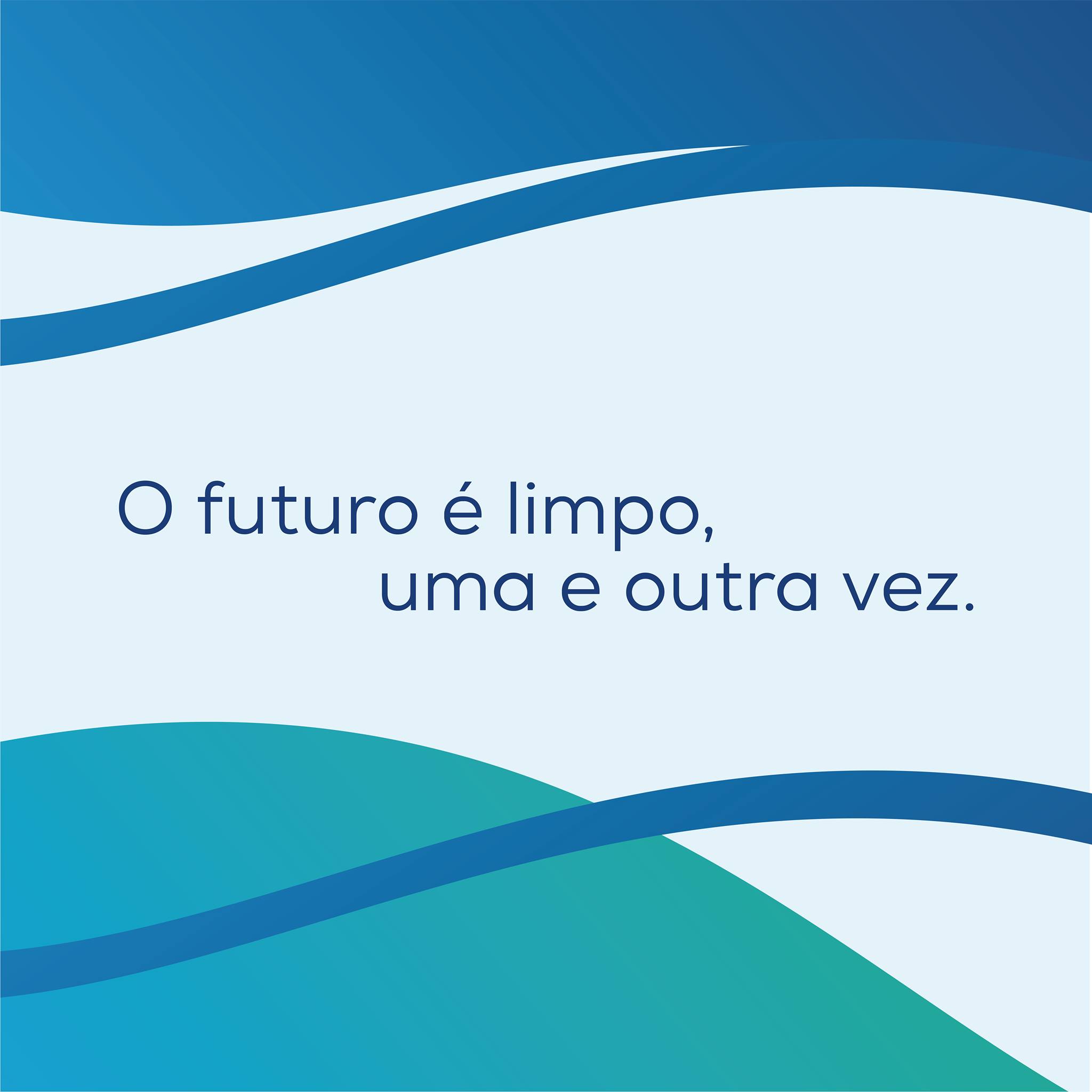
If you are interested of EcoX products visit their site , and watch this short introduction video about their mission.
The future is clean, over and over again.
” [“post_title”]=> string(34) “Revolutionizing Cleaning with EcoX” [“post_excerpt”]=> string(0) “” [“post_status”]=> string(7) “publish” [“comment_status”]=> string(6) “closed” [“ping_status”]=> string(6) “closed” [“post_password”]=> string(0) “” [“post_name”]=> string(34) “revolutionizing-cleaning-with-ecox” [“to_ping”]=> string(0) “” [“pinged”]=> string(0) “” [“post_modified”]=> string(19) “2024-02-27 15:16:23” [“post_modified_gmt”]=> string(19) “2024-02-27 15:16:23” [“post_content_filtered”]=> string(0) “” [“post_parent”]=> int(0) [“guid”]=> string(35) “https://future-ecosurf.com/?p=16802” [“menu_order”]=> int(0) [“post_type”]=> string(4) “post” [“post_mime_type”]=> string(0) “” [“comment_count”]=> string(1) “0” [“filter”]=> string(3) “raw” } [2]=> array(24) { [“ID”]=> int(16800) [“post_author”]=> string(1) “8” [“post_date”]=> string(19) “2024-06-13 10:00:00” [“post_date_gmt”]=> string(19) “2024-06-13 10:00:00” [“post_content”]=> string(3620) “One key element that significantly influences your surfing performance is the fin set-up on your surfboard. The choice between a single fin, twin fin, thruster, or quad fin configuration can drastically alter the way you maneuver on the waves.
Single Fin: The Classic Elegance
The single fin setup exudes classic elegance and is reminiscent of the early days of surfing. Providing stability and control, the single fin is favored for its smooth, flowing ride. It encourages a more traditional style of surfing, allowing surfers to gracefully trim and nose ride. However, the limitations become evident when it comes to tight turns and radical maneuvers. The single fin ideal for those who appreciate a soulful, laid-back approach to riding the waves.
Twin Fin: Speed and Playfulness
The twin fin set-up offers a blend of speed and playfulness. With two fins working in tandem, surfers experience increased maneuverability and a looser feel on the wave. Twin fins are known for their ability to generate speed effortlessly, making them ideal for small to medium-sized waves. This set-up is favored by those who enjoy a more dynamic, skate-like feel, allowing for snappy turns and creative lines on the wave.
Thruster: Versatility at Its Best
The thruster configuration, featuring three fins, is the most common and widely used set-up in modern surfing. Offering a perfect balance between speed, control, and maneuverability, the thruster allows surfers to excel in a variety of conditions. The center fin provides stability, while the side fins aid in turning and carving through the waves. Thrusters are the go-to choice for surfers who want a versatile board that performs well in a broad range of wave sizes and shapes.
Quad Fin: Power and Drive
For surfers seeking a combination of speed and drive, the quad fin set-up is an excellent choice. It got two pairs of fins set towards the tail. Quads excel in generating speed and maintaining control in critical sections of the wave. This configuration is particularly effective in larger, more powerful waves. Provides surfers with the stability that needed to handle the increased energy of the ocean. Quads are favored by those who appreciate a more down-the-line, high-speed approach to surfing.
In conclusion, the fin set-up on your surfboard is a crucial factor that defines your surfing experience. Whether you lean towards the classic elegance of a single fin, the speed and playfulness of a twin fin, the versatility of a thruster, or the power and drive of a quad, each configuration offers a unique ride that caters to different styles, conditions, and preferences.
” [“post_title”]=> string(45) “How Fin Set-Up Shapes Your Surfing Experience” [“post_excerpt”]=> string(0) “” [“post_status”]=> string(7) “publish” [“comment_status”]=> string(6) “closed” [“ping_status”]=> string(6) “closed” [“post_password”]=> string(0) “” [“post_name”]=> string(45) “how-fin-set-up-shapes-your-surfing-experience” [“to_ping”]=> string(0) “” [“pinged”]=> string(0) “” [“post_modified”]=> string(19) “2024-02-27 15:20:19” [“post_modified_gmt”]=> string(19) “2024-02-27 15:20:19” [“post_content_filtered”]=> string(0) “” [“post_parent”]=> int(0) [“guid”]=> string(35) “https://future-ecosurf.com/?p=16800” [“menu_order”]=> int(0) [“post_type”]=> string(4) “post” [“post_mime_type”]=> string(0) “” [“comment_count”]=> string(1) “0” [“filter”]=> string(3) “raw” } }Let’s be honest! We all need to start at some point and we all make mistakes during learning something new. In this article we gather 5 mistakes that beginners usually do in their first day of surfing apart of putting their wetsuits the other way around.
1. Putting the wrong foot first.
Before we start surfing we have to figure out which is our dominant foot what stands in the front. ( we wrote another article about this in here ) So what suppose to happen when we do a pop up is that we put our back foot first to right front of the fins. This is a short set up step and following this we put our front foot to the center of the board , driving in between the hands to under the chest. This is our long step and the step which drops the weight on your board so you can glide ahead on the wave.
Beginners tend to step with the front foot first and get stuck with their backfoot all the way in the end of the board so they have way too much space in between the legs or possibly not even able to stand up from such a wide position.
At the end we are only human ,we make mistakes but we only have two legs we have a relative 50-50 chance to mix up the order. Imagine if an octopus would try to surf. We can be considered lucky species.

2. Putting the knee down
As the wave starts pushing the board ahead we suppose to come up to the well known of yoga position “cobra” then start putting our back FOOT to the board. Here people can get shocked by the energy, the adrenalin ,the fear and all things happening at the same time so in a so-called panic reaction they push down the back of the board with their knees. In practice what happens : The tail starts to sink, the nose points up and we stall like in traffic our freshly licensed driver who drives with the handbrake on.

3. Looking down
Human body is the best designed machine ever but many of us forgot to read the user’s manual. As a matter of fact “You go where you look” So when we look down to our board while surfing , our eyes give the instruction to the brain to go DOWN. Next thing happens, you find yourself under water. Keep looking at the beach! On your first day your goal is to up and ride for a few seconds towards the beach.

4. Popping up too early/too late
It might sound a bit hippy but when we surf we must connect with the wave and become the wave. What this means in physics is that we have to gain a certain amount of kinetic energy very quickly so the wave can pick us up and push us ahead. If we start doing our pop up too early we miss the wave. If we already missed the wave it does not make sense to pop up because then we basically just stand up on flat water which is called Stand Up Paddling or SUP.

5. Not finding the balance or the right position
Most surf schools are teaching on the biggest boards possible to maximize the buoyant force and make you as stable as possible. Although just think about a rowing boat or kayak once you start moving even those objects can start shaking. Once you already unstable and shaking it’s very hard to keep in direction your board or catch a wave. Those who start surfing on a smaller day or can test themselves in flat water before they go between waves are the lucky ones. This way they can get familiar with their positioning and balance so once the wave comes they are ready to paddle ahead and catch.

These are the mistakes that you will probably commit on your first day of surfing. As it is a brand new sport for you, there is no shame of being a bit goofy in the beginning but you know what? Prove us wrong ! Come and show how a first timer can shred the waves too!
” [“post_title”]=> string(57) “5 mistakes that you will commit on your first surf lesson” [“post_excerpt”]=> string(0) “” [“post_status”]=> string(7) “publish” [“comment_status”]=> string(6) “closed” [“ping_status”]=> string(6) “closed” [“post_password”]=> string(0) “” [“post_name”]=> string(57) “5-mistakes-that-you-will-commit-on-your-first-surf-lesson” [“to_ping”]=> string(0) “” [“pinged”]=> string(0) “” [“post_modified”]=> string(19) “2024-04-08 14:15:40” [“post_modified_gmt”]=> string(19) “2024-04-08 14:15:40” [“post_content_filtered”]=> string(0) “” [“post_parent”]=> int(0) [“guid”]=> string(35) “https://future-ecosurf.com/?p=16859” [“menu_order”]=> int(0) [“post_type”]=> string(4) “post” [“post_mime_type”]=> string(0) “” [“comment_count”]=> string(1) “0” [“filter”]=> string(3) “raw” } [1]=> array(24) { [“ID”]=> int(16802) [“post_author”]=> string(1) “8” [“post_date”]=> string(19) “2024-06-20 10:12:00” [“post_date_gmt”]=> string(19) “2024-06-20 10:12:00” [“post_content”]=> string(5322) “In an era where environmental consciousness is paramount, ECOX stands out as a company dedicated to providing eco-friendly solutions for everyday needs. One of their flagship products, the ECOX Detergent, has gained significant attention for its innovative approach to cleaning while minimizing environmental impact.
Introduction to ECOX
A company that has made sustainability the core of its mission. Established in 2010, the company has consistently strived to develop products that align with eco-friendly practices. Their commitment to the environment is evident in every aspect of their operations, from sourcing raw materials to packaging and distribution.
Their Detergent
It is a testament to the company’s dedication to sustainable living. Unlike traditional detergents that often contain harmful chemicals and contribute to pollution, ECOX Detergent is formulated with biodegradable ingredients that break down naturally without harming the environment. This not only ensures a safe and gentle cleaning experience but also reduces the overall carbon footprint associated with the product.
One of the standout features of ECOX Detergent is its innovative packaging. The company has adopted a minimalist approach, using recycled and recyclable materials for their containers. This not only reduces plastic waste but also encourages consumers to participate in recycling initiatives. Additionally, the packaging is designed to be lightweight, further reducing the environmental impact associated with transportation.

Beyond its eco-friendly composition and packaging
ECOX Detergent does not compromise on cleaning effectiveness. The product is specifically formulated to tackle tough stains and dirt while being gentle on fabrics and surfaces. This balance between efficiency and environmental consciousness has garnered praise from consumers who seek effective cleaning solutions without compromising their commitment to sustainability.
ECOX’s approach to business
Extends beyond their product line. The company actively engages in environmental initiatives, supporting causes such as reforestation projects and beach cleanups. This holistic approach to corporate responsibility aligns with the values of environmentally conscious consumers who are increasingly seeking products from companies that prioritize both efficacy and sustainability.
In conclusion
ECOX and its detergent product represent a positive shift towards sustainable living. By combining effective cleaning solutions with eco-friendly practices, ECOX is setting a precedent for companies in the cleaning industry. As consumers become more aware of their environmental impact, ECOX stands as a beacon of innovation, providing a cleaner and greener future for all.

If you are interested of EcoX products visit their site , and watch this short introduction video about their mission.
The future is clean, over and over again.
” [“post_title”]=> string(34) “Revolutionizing Cleaning with EcoX” [“post_excerpt”]=> string(0) “” [“post_status”]=> string(7) “publish” [“comment_status”]=> string(6) “closed” [“ping_status”]=> string(6) “closed” [“post_password”]=> string(0) “” [“post_name”]=> string(34) “revolutionizing-cleaning-with-ecox” [“to_ping”]=> string(0) “” [“pinged”]=> string(0) “” [“post_modified”]=> string(19) “2024-02-27 15:16:23” [“post_modified_gmt”]=> string(19) “2024-02-27 15:16:23” [“post_content_filtered”]=> string(0) “” [“post_parent”]=> int(0) [“guid”]=> string(35) “https://future-ecosurf.com/?p=16802” [“menu_order”]=> int(0) [“post_type”]=> string(4) “post” [“post_mime_type”]=> string(0) “” [“comment_count”]=> string(1) “0” [“filter”]=> string(3) “raw” } [2]=> array(24) { [“ID”]=> int(16800) [“post_author”]=> string(1) “8” [“post_date”]=> string(19) “2024-06-13 10:00:00” [“post_date_gmt”]=> string(19) “2024-06-13 10:00:00” [“post_content”]=> string(3620) “One key element that significantly influences your surfing performance is the fin set-up on your surfboard. The choice between a single fin, twin fin, thruster, or quad fin configuration can drastically alter the way you maneuver on the waves.
Single Fin: The Classic Elegance
The single fin setup exudes classic elegance and is reminiscent of the early days of surfing. Providing stability and control, the single fin is favored for its smooth, flowing ride. It encourages a more traditional style of surfing, allowing surfers to gracefully trim and nose ride. However, the limitations become evident when it comes to tight turns and radical maneuvers. The single fin ideal for those who appreciate a soulful, laid-back approach to riding the waves.
Twin Fin: Speed and Playfulness
The twin fin set-up offers a blend of speed and playfulness. With two fins working in tandem, surfers experience increased maneuverability and a looser feel on the wave. Twin fins are known for their ability to generate speed effortlessly, making them ideal for small to medium-sized waves. This set-up is favored by those who enjoy a more dynamic, skate-like feel, allowing for snappy turns and creative lines on the wave.
Thruster: Versatility at Its Best
The thruster configuration, featuring three fins, is the most common and widely used set-up in modern surfing. Offering a perfect balance between speed, control, and maneuverability, the thruster allows surfers to excel in a variety of conditions. The center fin provides stability, while the side fins aid in turning and carving through the waves. Thrusters are the go-to choice for surfers who want a versatile board that performs well in a broad range of wave sizes and shapes.
Quad Fin: Power and Drive
For surfers seeking a combination of speed and drive, the quad fin set-up is an excellent choice. It got two pairs of fins set towards the tail. Quads excel in generating speed and maintaining control in critical sections of the wave. This configuration is particularly effective in larger, more powerful waves. Provides surfers with the stability that needed to handle the increased energy of the ocean. Quads are favored by those who appreciate a more down-the-line, high-speed approach to surfing.
In conclusion, the fin set-up on your surfboard is a crucial factor that defines your surfing experience. Whether you lean towards the classic elegance of a single fin, the speed and playfulness of a twin fin, the versatility of a thruster, or the power and drive of a quad, each configuration offers a unique ride that caters to different styles, conditions, and preferences.
” [“post_title”]=> string(45) “How Fin Set-Up Shapes Your Surfing Experience” [“post_excerpt”]=> string(0) “” [“post_status”]=> string(7) “publish” [“comment_status”]=> string(6) “closed” [“ping_status”]=> string(6) “closed” [“post_password”]=> string(0) “” [“post_name”]=> string(45) “how-fin-set-up-shapes-your-surfing-experience” [“to_ping”]=> string(0) “” [“pinged”]=> string(0) “” [“post_modified”]=> string(19) “2024-02-27 15:20:19” [“post_modified_gmt”]=> string(19) “2024-02-27 15:20:19” [“post_content_filtered”]=> string(0) “” [“post_parent”]=> int(0) [“guid”]=> string(35) “https://future-ecosurf.com/?p=16800” [“menu_order”]=> int(0) [“post_type”]=> string(4) “post” [“post_mime_type”]=> string(0) “” [“comment_count”]=> string(1) “0” [“filter”]=> string(3) “raw” } }Let’s be honest! We all need to start at some point and we all make mistakes during learning something new. In this article we gather 5 mistakes that beginners usually do in their first day of surfing apart of putting their wetsuits the other way around.
1. Putting the wrong foot first.
Before we start surfing we have to figure out which is our dominant foot what stands in the front. ( we wrote another article about this in here ) So what suppose to happen when we do a pop up is that we put our back foot first to right front of the fins. This is a short set up step and following this we put our front foot to the center of the board , driving in between the hands to under the chest. This is our long step and the step which drops the weight on your board so you can glide ahead on the wave.
Beginners tend to step with the front foot first and get stuck with their backfoot all the way in the end of the board so they have way too much space in between the legs or possibly not even able to stand up from such a wide position.
At the end we are only human ,we make mistakes but we only have two legs we have a relative 50-50 chance to mix up the order. Imagine if an octopus would try to surf. We can be considered lucky species.

2. Putting the knee down
As the wave starts pushing the board ahead we suppose to come up to the well known of yoga position “cobra” then start putting our back FOOT to the board. Here people can get shocked by the energy, the adrenalin ,the fear and all things happening at the same time so in a so-called panic reaction they push down the back of the board with their knees. In practice what happens : The tail starts to sink, the nose points up and we stall like in traffic our freshly licensed driver who drives with the handbrake on.

3. Looking down
Human body is the best designed machine ever but many of us forgot to read the user’s manual. As a matter of fact “You go where you look” So when we look down to our board while surfing , our eyes give the instruction to the brain to go DOWN. Next thing happens, you find yourself under water. Keep looking at the beach! On your first day your goal is to up and ride for a few seconds towards the beach.

4. Popping up too early/too late
It might sound a bit hippy but when we surf we must connect with the wave and become the wave. What this means in physics is that we have to gain a certain amount of kinetic energy very quickly so the wave can pick us up and push us ahead. If we start doing our pop up too early we miss the wave. If we already missed the wave it does not make sense to pop up because then we basically just stand up on flat water which is called Stand Up Paddling or SUP.

5. Not finding the balance or the right position
Most surf schools are teaching on the biggest boards possible to maximize the buoyant force and make you as stable as possible. Although just think about a rowing boat or kayak once you start moving even those objects can start shaking. Once you already unstable and shaking it’s very hard to keep in direction your board or catch a wave. Those who start surfing on a smaller day or can test themselves in flat water before they go between waves are the lucky ones. This way they can get familiar with their positioning and balance so once the wave comes they are ready to paddle ahead and catch.

These are the mistakes that you will probably commit on your first day of surfing. As it is a brand new sport for you, there is no shame of being a bit goofy in the beginning but you know what? Prove us wrong ! Come and show how a first timer can shred the waves too!
” [“post_title”]=> string(57) “5 mistakes that you will commit on your first surf lesson” [“post_excerpt”]=> string(0) “” [“post_status”]=> string(7) “publish” [“comment_status”]=> string(6) “closed” [“ping_status”]=> string(6) “closed” [“post_password”]=> string(0) “” [“post_name”]=> string(57) “5-mistakes-that-you-will-commit-on-your-first-surf-lesson” [“to_ping”]=> string(0) “” [“pinged”]=> string(0) “” [“post_modified”]=> string(19) “2024-04-08 14:15:40” [“post_modified_gmt”]=> string(19) “2024-04-08 14:15:40” [“post_content_filtered”]=> string(0) “” [“post_parent”]=> int(0) [“guid”]=> string(35) “https://future-ecosurf.com/?p=16859” [“menu_order”]=> int(0) [“post_type”]=> string(4) “post” [“post_mime_type”]=> string(0) “” [“comment_count”]=> string(1) “0” [“filter”]=> string(3) “raw” } [1]=> array(24) { [“ID”]=> int(16802) [“post_author”]=> string(1) “8” [“post_date”]=> string(19) “2024-06-20 10:12:00” [“post_date_gmt”]=> string(19) “2024-06-20 10:12:00” [“post_content”]=> string(5322) “In an era where environmental consciousness is paramount, ECOX stands out as a company dedicated to providing eco-friendly solutions for everyday needs. One of their flagship products, the ECOX Detergent, has gained significant attention for its innovative approach to cleaning while minimizing environmental impact.
Introduction to ECOX
A company that has made sustainability the core of its mission. Established in 2010, the company has consistently strived to develop products that align with eco-friendly practices. Their commitment to the environment is evident in every aspect of their operations, from sourcing raw materials to packaging and distribution.
Their Detergent
It is a testament to the company’s dedication to sustainable living. Unlike traditional detergents that often contain harmful chemicals and contribute to pollution, ECOX Detergent is formulated with biodegradable ingredients that break down naturally without harming the environment. This not only ensures a safe and gentle cleaning experience but also reduces the overall carbon footprint associated with the product.
One of the standout features of ECOX Detergent is its innovative packaging. The company has adopted a minimalist approach, using recycled and recyclable materials for their containers. This not only reduces plastic waste but also encourages consumers to participate in recycling initiatives. Additionally, the packaging is designed to be lightweight, further reducing the environmental impact associated with transportation.

Beyond its eco-friendly composition and packaging
ECOX Detergent does not compromise on cleaning effectiveness. The product is specifically formulated to tackle tough stains and dirt while being gentle on fabrics and surfaces. This balance between efficiency and environmental consciousness has garnered praise from consumers who seek effective cleaning solutions without compromising their commitment to sustainability.
ECOX’s approach to business
Extends beyond their product line. The company actively engages in environmental initiatives, supporting causes such as reforestation projects and beach cleanups. This holistic approach to corporate responsibility aligns with the values of environmentally conscious consumers who are increasingly seeking products from companies that prioritize both efficacy and sustainability.
In conclusion
ECOX and its detergent product represent a positive shift towards sustainable living. By combining effective cleaning solutions with eco-friendly practices, ECOX is setting a precedent for companies in the cleaning industry. As consumers become more aware of their environmental impact, ECOX stands as a beacon of innovation, providing a cleaner and greener future for all.

If you are interested of EcoX products visit their site , and watch this short introduction video about their mission.
The future is clean, over and over again.
” [“post_title”]=> string(34) “Revolutionizing Cleaning with EcoX” [“post_excerpt”]=> string(0) “” [“post_status”]=> string(7) “publish” [“comment_status”]=> string(6) “closed” [“ping_status”]=> string(6) “closed” [“post_password”]=> string(0) “” [“post_name”]=> string(34) “revolutionizing-cleaning-with-ecox” [“to_ping”]=> string(0) “” [“pinged”]=> string(0) “” [“post_modified”]=> string(19) “2024-02-27 15:16:23” [“post_modified_gmt”]=> string(19) “2024-02-27 15:16:23” [“post_content_filtered”]=> string(0) “” [“post_parent”]=> int(0) [“guid”]=> string(35) “https://future-ecosurf.com/?p=16802” [“menu_order”]=> int(0) [“post_type”]=> string(4) “post” [“post_mime_type”]=> string(0) “” [“comment_count”]=> string(1) “0” [“filter”]=> string(3) “raw” } [2]=> array(24) { [“ID”]=> int(16800) [“post_author”]=> string(1) “8” [“post_date”]=> string(19) “2024-06-13 10:00:00” [“post_date_gmt”]=> string(19) “2024-06-13 10:00:00” [“post_content”]=> string(3620) “One key element that significantly influences your surfing performance is the fin set-up on your surfboard. The choice between a single fin, twin fin, thruster, or quad fin configuration can drastically alter the way you maneuver on the waves.
Single Fin: The Classic Elegance
The single fin setup exudes classic elegance and is reminiscent of the early days of surfing. Providing stability and control, the single fin is favored for its smooth, flowing ride. It encourages a more traditional style of surfing, allowing surfers to gracefully trim and nose ride. However, the limitations become evident when it comes to tight turns and radical maneuvers. The single fin ideal for those who appreciate a soulful, laid-back approach to riding the waves.
Twin Fin: Speed and Playfulness
The twin fin set-up offers a blend of speed and playfulness. With two fins working in tandem, surfers experience increased maneuverability and a looser feel on the wave. Twin fins are known for their ability to generate speed effortlessly, making them ideal for small to medium-sized waves. This set-up is favored by those who enjoy a more dynamic, skate-like feel, allowing for snappy turns and creative lines on the wave.
Thruster: Versatility at Its Best
The thruster configuration, featuring three fins, is the most common and widely used set-up in modern surfing. Offering a perfect balance between speed, control, and maneuverability, the thruster allows surfers to excel in a variety of conditions. The center fin provides stability, while the side fins aid in turning and carving through the waves. Thrusters are the go-to choice for surfers who want a versatile board that performs well in a broad range of wave sizes and shapes.
Quad Fin: Power and Drive
For surfers seeking a combination of speed and drive, the quad fin set-up is an excellent choice. It got two pairs of fins set towards the tail. Quads excel in generating speed and maintaining control in critical sections of the wave. This configuration is particularly effective in larger, more powerful waves. Provides surfers with the stability that needed to handle the increased energy of the ocean. Quads are favored by those who appreciate a more down-the-line, high-speed approach to surfing.
In conclusion, the fin set-up on your surfboard is a crucial factor that defines your surfing experience. Whether you lean towards the classic elegance of a single fin, the speed and playfulness of a twin fin, the versatility of a thruster, or the power and drive of a quad, each configuration offers a unique ride that caters to different styles, conditions, and preferences.
” [“post_title”]=> string(45) “How Fin Set-Up Shapes Your Surfing Experience” [“post_excerpt”]=> string(0) “” [“post_status”]=> string(7) “publish” [“comment_status”]=> string(6) “closed” [“ping_status”]=> string(6) “closed” [“post_password”]=> string(0) “” [“post_name”]=> string(45) “how-fin-set-up-shapes-your-surfing-experience” [“to_ping”]=> string(0) “” [“pinged”]=> string(0) “” [“post_modified”]=> string(19) “2024-02-27 15:20:19” [“post_modified_gmt”]=> string(19) “2024-02-27 15:20:19” [“post_content_filtered”]=> string(0) “” [“post_parent”]=> int(0) [“guid”]=> string(35) “https://future-ecosurf.com/?p=16800” [“menu_order”]=> int(0) [“post_type”]=> string(4) “post” [“post_mime_type”]=> string(0) “” [“comment_count”]=> string(1) “0” [“filter”]=> string(3) “raw” } }”Amazing team, great teachers, lot of fun, great souvenir, wonderful landscape see you next year!”
Joseys
Accreditations







